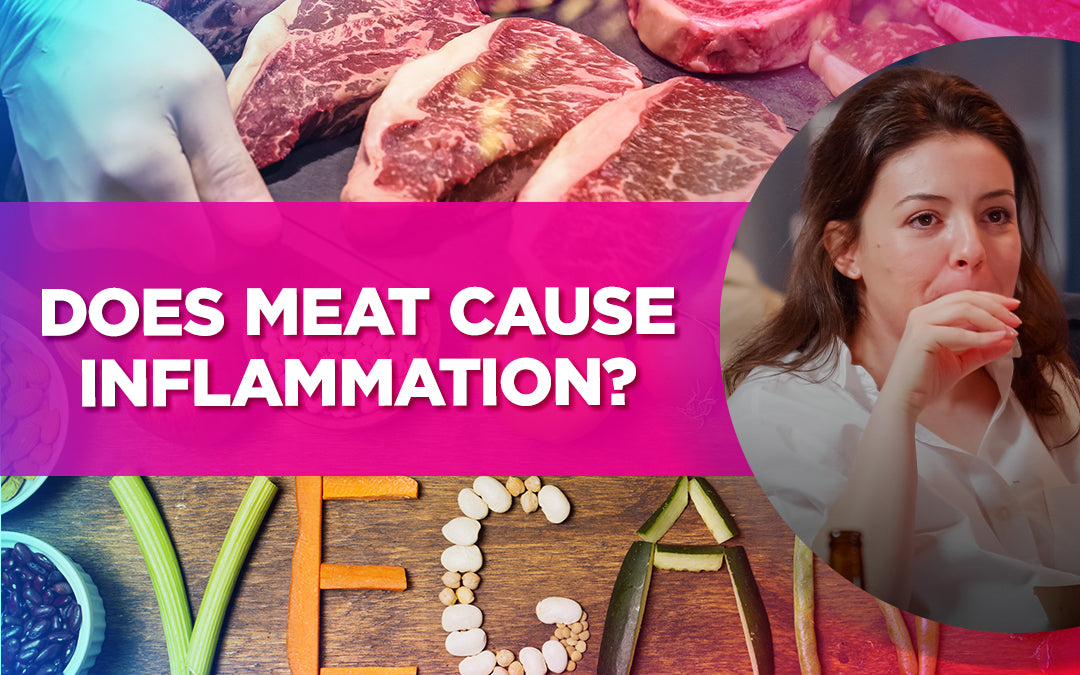What You Need To Know About The Biggest Blood Pressure Myth
Dr LivingoodShare

Many people want to know: what are the hidden causes of high blood pressure?
You may be wondering, “Is sodium the real cause of high blood pressure?” and “Does cutting sodium lower blood pressure?”
Read on to learn more about the myths about salt!
In 2006, a groundbreaking study published in the American Journal of Medicine sent shockwaves through the medical community, challenging existing beliefs about sodium intake and its connection to heart disease mortality.
The research, which analyzed the daily sodium consumption of 78 million Americans over 14 days, revealed a surprising revelation: lower sodium diets were associated with higher mortality rates among individuals already grappling with cardiovascular disease.
This unexpected finding sparked a crucial debate, raising questions about the optimal sodium intake for a healthy heart.
The study shed light on the delicate balance needed in our sodium consumption.
It revealed that extreme approaches — be it excessive processed salt or a complete elimination of salt — could have detrimental effects on our health.
The key takeaway from the study?
Moderation is the key to maintaining a healthy heart.
Let’s get these salty sodium myths busted!

The Dangers of Extreme Sodium Intake
The study made it abundantly clear that embracing extreme dietary habits concerning sodium could lead to severe consequences.
On one end of the spectrum, indulging in large amounts of processed salt, commonly found in table salt (NaCl) and preservative salts present in packaged foods, can wreak havoc on our cardiovascular system.
High sodium intake can elevate blood pressure, putting undue stress on the heart and increasing the risk of heart disease and stroke.
It’s a cautionary tale against the allure of convenient processed foods laden with sodium, reminding us of the importance of scrutinizing our dietary choices.
On the other hand, the study also highlighted the dangers of eliminating salt entirely from our diet.
Salt, a fundamental mineral, is essential for various bodily functions.
Complete elimination can lead to mineral deficiencies, disrupting the delicate balance required for our bodies to function optimally.
Without adequate sodium, our bodies can face electrolyte imbalances, muscle cramps, and, in severe cases, life-threatening conditions.

The Middle Ground: Striking a Balance
So, where does this leave us in our quest for a heart-healthy diet?
The answer lies in finding the middle ground. The study emphasized the importance of striking a balance — not too much, not too little — when it comes to sodium intake.
Instead of banishing salt entirely, we should focus on choosing the right kind of salt and consuming it in moderation.
Real salts, such as Himalayan salt, Celtic salt, and sea salt, emerge as the heroes of this narrative.
These unprocessed, natural salts contain essential minerals that are beneficial for our health.
Unlike their processed counterparts, real salts provide the body with the necessary nutrients without the harmful additives.
Incorporating these healthier alternatives into our diets ensures that we receive the essential minerals without overindulging in sodium.

Beyond Sodium: The Role of Insulin

The study’s findings not only underscore the significance of balanced sodium intake but also emphasize the importance of addressing underlying health issues.
One crucial factor that often goes unnoticed in discussions about heart health is insulin. The study hinted at the significance of insulin in the context of blood pressure regulation.
It suggests that focusing on insulin management can play a pivotal role in maintaining healthy blood pressure levels.
Insulin, a hormone produced by the pancreas, plays a central role in regulating glucose metabolism.
When our bodies become resistant to insulin, it can lead to various health issues, including high blood pressure.
By addressing insulin resistance through mindful dietary choices, regular exercise, and lifestyle modifications, individuals can take proactive steps toward supporting their overall cardiovascular health.
Conclusion: The Path to Heart-Healthy Living
The 2006 study on sodium intake serves as a crucial reminder that extremes, whether excessive consumption or complete elimination, are not the answers to a healthy heart.
Instead, the key lies in finding balance by embracing moderate, mindful choices that nurture our bodies without overwhelming them.
Choosing natural, unprocessed salts like Himalayan salt, Celtic salt, or sea salt can significantly contribute to our overall well-being.
Coupled with a focus on insulin management, these dietary changes empower us to help support our heart health and lead fulfilling lives.
In the pursuit of a heart-healthy lifestyle, let us heed the wisdom of this study: moderation is our guiding light.
By making informed choices, striking the right balance, and addressing underlying health factors, we can embark on a journey towards a healthier heart and a happier, more vibrant life.
If you want more help with making health simple, grab a free copy of my book!
For more articles like this one, delicious recipes, and a community of people who are also pursuing real health, visit my website!

Share
Related Articles
Most Popular
-
The 5 Amazing Benefits of Omega-3s
August 13, 2024 -
Healing Your ‘Second Brain’: The Path to a Healthier Gut
August 13, 2024







